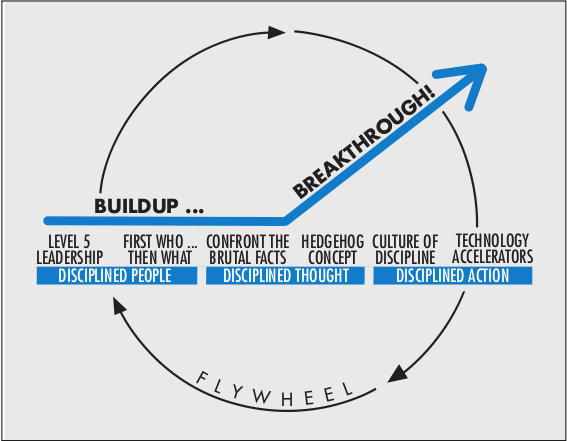The Four Stages of Company Transformation
Transformation of a company, business or organization from a point of break-even to a point where it achieves market relevance is the dream of every leader. However, this is easier said than done. In his Book ‘Good to Great’, Jim Collins provided a framework for achieving company transformation using the flywheel concept. This was created after Collins studied 28 companies, 11 of which successfully made the leap from ‘Good to Great’.
Collins identified four company transformation stages;
- Disciplined People
- Disciplined Thought
- Disciplined Action
- Building Greatness to Last
He went on further to break each stage down into two concepts
Disciplined People
To make the leap from good to Great, organizations need to have disciplined people across board – from the leadership to the person with the smallest role in the organization. Under this stage, Collins identified two critical factors
Level-5 Leadership
Collins stresses that the leaders who desired Good to Great organizations showed true passion and vision for their organizations; they put the needs and interests of the company before theirs, put everything on the line to make things work and did not make themselves more important than the organizations they ran. These leaders were also more inclined towards transactional leadership; they showed zero tolerance for mediocrity and pushed everyone to deliver their best. However, they were not spotlight-crazy; when things went smoothly, they savored the success behind the scenes and when things went south, they took the blame upon themselves
Company Transformation – First Who, Then What
This involved putting round pegs in round holes and plugging the leaks in manpower. After ensuring that they did their part of the work, leaders found the right people and put them in the right spots. They removed poor performers and improved efficiency throughout the organization. This way, they had clarity of purpose, clarity of direction and the right people (who showed enthusiasm, were self-starters and highly self-motivated) to bring the overall vision to reality.
Stay tuned for part 2. Want to be notified when the next post is published? Sign-up below!

No Comments